
Incident at Oakwood Farm user worked level crossing, 14 May 2015. Photo credit: Network Rail
IOSH’s Rural Industries Group has worked to raise awareness of safety at rural railway crossings – at its networking events and rail industry awareness days. Alan Plom explains what delegates can expect from these ‘awareness days’ and why they are essential for safety professionals across all industries.
The rural environment poses unique health and safety risks to local communities. One of the most overlooked issues is the danger posed by railway crossings, which, over the past decade, have been the scene of many avoidable fatalities and many more ‘near-misses’ – particularly on ‘user-worked’ private crossings (UWCs). This issue is described in more depth in ‘Safe crossing’ (SHP October 2015, page 34).
To raise awareness of the danger and promote good practice in the use of UWCs, over recent years IOSH’s Rural Industries Group (RIG) has focused on this issue at several of its networking events that cover transport and electrical safety.
RIG has also supported the Office of Rail and Road (ORR) and Network Rail at a series of ‘transport awareness days’, focusing on UWCs and avoiding contact with overhead power lines (OHPLs).
These awareness days are relevant to almost any industry sector, not just companies and contractors working on railways or in ‘rural industries’ but anyone whose employees cross the railway at private rail crossings.
In addition to delegates from farming, forestry and related activities, UWC ‘awareness days’ have been attended so far by representatives from utilities; waste and recycling; environment, canals and rivers, etc; local authorities, rights of way officers, emergency services; the leisure, sports and voluntary sectors; construction and maintenance; transport, delivery of goods, mail and parcels.
A number of HSE inspectors have also attended these events, together with Network Rail policy staff, signalling and engineering project managers, contractors and others for training purposes, facilitating discussion between them and crossing users.
The ‘awareness days’ are mostly held at the Forestry Commission’s Visitor’s Centre at Birches Valley, Cannock Chase, Staffs, and are based around a nearby mock rail crossing, built in 2010 by Network Rail for the APF (Forestry) Show held there that year.

An ‘awareness day’ at Cannock Chase. Photo credit: Alan Plom
This training facility enables simulated use of a typical level crossing by any vehicle and pedestrians. It is complete with a length of track and manually operated ‘user-worked’ gates, with the typical infrastructure equipment (i.e. telephone, alternative signs for different types of crossing, etc). Some ‘awareness days’ have also been held elsewhere, e.g. at crossings on heritage railways around the country.
ORR and Network Rail jointly run these events and their main purpose is to present practical guidance. Sessions include demonstrations to show users how to avoid errors in crossing the railway and how the significant risks can be properly managed, within the context of an organisation’s transport safety regime.
What we’ve found from these ‘awareness days’ is that most attendees are surprised to see the safe sighting distances for trains and the limitations of train signalling protection at these crossings. Few are aware of the correct basic procedure to cross safely before attending the sessions (i.e use of the telephone, the correct procedure for opening and closing gates, looking for trains, driving over crossings, etc).
Careful reading of the signs displayed at crossings is emphasised as being critical. Many users feel these can be misinterpreted and Network Rail is currently working to make them more intuitive and easy to understand. However, it will require legislation to amend the existing statutory signs, so this cannot happen immediately.
Effective UWC risk assessments
In addition to the information provided at crossings by the signs, the telephone’s box (where one is provided) contains essential instructions, i.e. on how to use the phone, details of the controlling signal box, the name of the crossing and its grid reference.

The incident at Oakwood Farm on 14 May 2015. Photo credit: Network Rail
Several other pieces of information are also vital and need to be collated jointly with Network Rail to inform risk assessments for use of level crossing. These include:
- At ‘Sighting UWCs’, i.e. those relying on looking out for an approaching train, the sighting distance available for each vehicle likely to use the crossing, and for pedestrians is needed. [Note: Remember that telescopic handlers, tractors with front-mounted equipment, mobile cranes or other vehicles with long ‘bonnets’ etc, may make it impossible to see up the line from the driving position, so it might be necessary to post (and train) banksmen, or ask Network Rail to supply a railway crossing attendant for specific operations involving such vehicles.]
- What to do at a Sighting UWC when visibility is reduced or conditions are poor, e.g. due to fog, snow, or ice. (Note: If the view is obstructed e.g. due to vegetation or rail-side equipment, this should be reported to Network Rail.)
- It is helpful (and revealing) to sit in the seat of your vehicle – at a safe distance from the railway line – and confirm with Network Rail what the actual sighting distances are from the driver’s position.
- At a telephone UWC, ascertain what to do when the signaller doesn’t answer the phone, out of hours arrangements, what to do in an emergency, and if there is a problem with the controls. [Note: The ‘safe system of work’ that states that the crossing is safe to use should be countersigned by the Authorised User and Network Rail.]
- Ask how multiple vehicles (or livestock) should be taken across the tracks.
- Explore with Network Rail the potential for installing ‘take-off’ and ‘landing bays’ or power-operated gates. These avoid the need to cross the track four times on foot.
- ORR and HSE advise that the 25kV overhead line conductors for the railway should be no lower than 5.8m. However, they may already be installed (with the Authorised User’s agreement) at 4.7m or even lower. [Note: Many agricultural machines are dangerously close to this, or can exceed it. Also consider the effect of sloped approaches to crossings. The minimum height of (11kV) overhead power lines over farmland is 5.2m.]
Train speeds are increasing on many lines and on some more trains are being run. This means that anyone who manages operations or commissions contractors who use these crossings needs to be aware that at some UWCs, crossing times will be reduced, while at others waiting times are likely to increase significantly.

Moving a combine across the tracks. Photo credit: Alan Plom
The consequent delay in crossing the tracks must be factored in to planning and pricing of jobs, if contractors are not to subject themselves to economic pressure as well as weather and other normal work pressures. These constraints typically lead to drivers/operators taking ‘short-cuts’ and not following the proper (i.e. safe) procedure, e.g. by crossing without calling the signaller at telephone UWCs, or leaving gates open ‘to save time’.
So, finally – as with any safety critical system of work – those responsible must make sure that the procedures are understood and being followed by those under their control. They will also need to think about visitors, e.g. customers, delivery drivers (including domestic callers), maintenance engineers, etc, and provide appropriate information and briefing.
Typical UWC awareness day
The most recent event was held at Cannock on 29 July 2015 and focussed on the water and waste sector. Sponsored by Severn Trent Water (STW) it was chaired by Clare Gabriel (CMIOSH), STW’s health, safety and wellbeing leader for wholesale operations.
Introducing the day, Clare explained that STW’s staff and their contractors have to regularly cross a number of UWCs to access their sites and commented: “As an organisation we – like many – had not fully appreciated the risk involved in the use of rail crossings by our employees and contractors.
However, following an incident in 2011 and a meeting with the ORR it was decided that STW would run a number of ORR training days at the Cannock Chase facility to upskill both our contractors and employees.
“These awareness days have proved to be absolutely vital to our management of this risk within our business. Having large vehicles, including cranes and farm machinery needing access to our sites, knowing that our staff and contractors understand both the risk involved and the safe operation procedures, has helped us significantly.
“Our contractors have responded very favourably when asked to attend these days and have found that it also supports their own risk assessments too.
“Unmanned user-operated level crossings are identified as a significant risk in Severn Trent Water, but by investing the time to train our employees and our contractors we feel that this risk is now being significantly mitigated.”
As usual, ORR’s team (Simon Smith and Adam Meredith) described and demonstrated the procedures and precautions necessary to cross the railway safely, while Tim Clark, a level crossing risk specialist in Network Rail’s national level crossing team explained their perspective and activities to reduce risk at level crossings.
Both ORR and Network Rail emphasise that anyone responsible for UWCs should first consider if a crossing needs to be used at all and then to identify ways to reduce the risk, for example, by adopting an alternative route or by working with Network Rail to replace the crossing with an underpass or bridge.
Those moving livestock should consider transporting animals in a vehicle rather than crossing them ‘on the hoof’. Even making ‘less hazardous’ use of the land on the other side of the tracks, i.e. reducing the number of uses of a crossing. All employers whose undertakings include use of UWCs should carry out a joint risk assessment together with their local Network Rail level crossing manager at the crossing.

The POGO demo. Photo credit: Alan Plom
Other organisations demonstrated their new developments to improve safety at UWC awareness days. Bradley Aldridge, (general manager, Gatecare Ltd) described the latest UWC gate technology and the benefits of installing its solar power-operated gates (known as ‘POGOs’ and approved by Network Rail).
Dr Bryan Denby (managing director, Mission Room Ltd) demonstrated its interesting 360-degree visual display system, which provides a very effective training tool. Initially developed as a ‘portable training room’ format for the rail industry, its new ‘street view’ and multi-screen tv format would be equally useful for a wide range of other industries, e.g. roadside working, or on construction sites, etc.

The Mission Room. Photo credit: Alan Plom
In addition to rail-related safety issues, John Haddon (CMIOSH), a long-term supporter of these events demonstrated electrical hazards and safe working near power lines. John is the public safety advisor for UK Power Networks (UKPN), and has appeared on behalf of the Energy Networks Association, the trade organisation for electricity distributors.
These demonstrations highlight electrical hazards at temporary worksites and avoiding contact with both underground and overhead cables, using a mock 11kV overhead power line erected over the crossing. This session helps attendees to understand and comply with relevant HSE guidance [i.e. GS6 ‘Avoiding danger from overhead power lines’ and HSG47 ‘Avoiding danger from underground services’, available on HSE’s website.
ORR and Network Rail are keen to find other opportunities to ‘spread the word’ and are willing to arrange training sessions tailored to suit specific industries, individual companies, groups or branches.
With this in mind, the author described what the Rural Industries Group’s members have been doing in partnership with other organisations in the land-based sector (and beyond) to raise awareness of this issue, illustrating what other industry groups and external organisations and businesses could do within their own spheres of influence.
The next UWC/Transport awareness day is at Cannock is on 11 November 2015 and is aimed at emergency services.
Anyone interested in attending this or another awareness day in future, or organising an event for your own organisation should contact Adam Meredith: [email protected]

Tractor-train collision Flaxby-Oakwood, 14 May 2015. Photo credit: Network Rail
Further information
It would be best to contact your local Network Rail level crossing manager. If you don’t know who this is, you can contact Network Rail via one of the options given on its website, or telephoning 03457 11 41 41 directly.
General guidance for various users (drivers, pedestrians, horse riders etc) and standards for all types of level crossings are available on the Network Rail’s website. This webpage also includes a complete alphabetical list and photos of rail crossing, searchable by type or location. This list also indicates the number of trains per day, the line-speed and the date of each crossing’s latest risk assessment.
Further detailed advice is also available by searching for ‘crossings’ on the guidance section of ORR’s website – this includes a useful ‘safety notice for users’.
A short film explaining safe use of UWCs (based on the training facility at Cannock) is available on the IOSH RIG home page. The film is also available directly on You Tube.
The Rail Accident Investigation Board (RAIB) Report into the White House Farm crossing incident highlights some very pertinent factors to be considered in risk assessments and method statements. On this occasion the tractor driver was given permission to cross, even though the train was only 100m away and travelling at 70mph when he started to do so. This emphasises the need to still ‘Stop, Look and Listen’.
Alan Plom is vice chair of the IOSH Rural Industries Group
Alan Plom recently attended Network Rail’s Level Crossing Strategy Group in his role as vice chair of IOSH’s Rural Industries Group and as a member of the Farm Safety Partnership’s Board. Alan can be contacted directly via [email protected] or via IOSH at [email protected]
The Safety Conversation Podcast: Listen now!
The Safety Conversation with SHP (previously the Safety and Health Podcast) aims to bring you the latest news, insights and legislation updates in the form of interviews, discussions and panel debates from leading figures within the profession.
Find us on Apple Podcasts, Spotify and Google Podcasts, subscribe and join the conversation today!

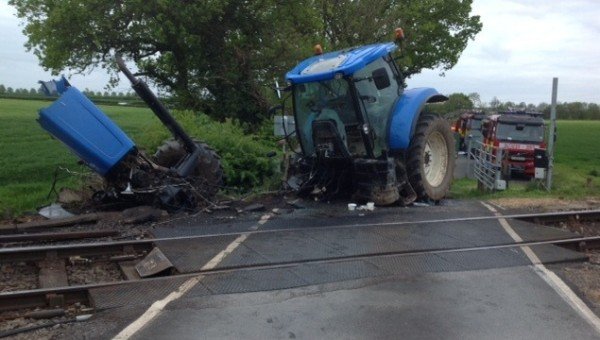
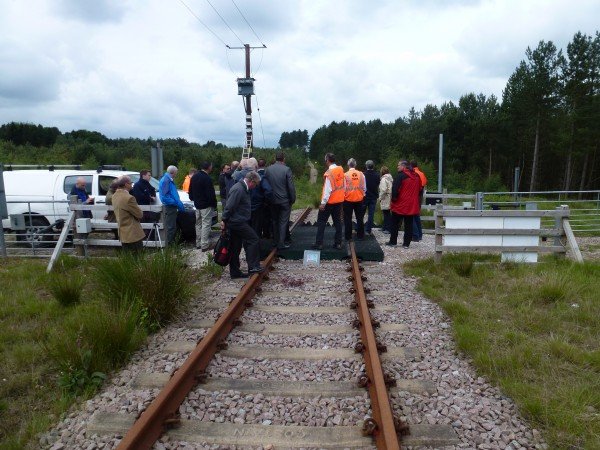
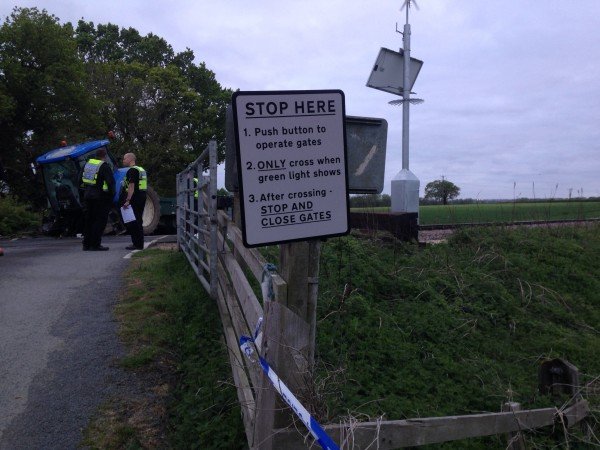
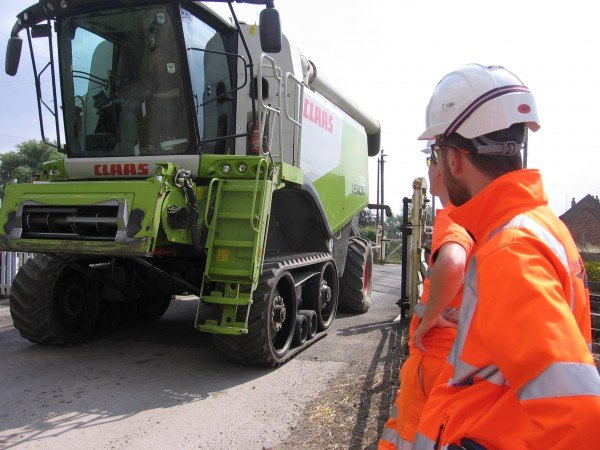
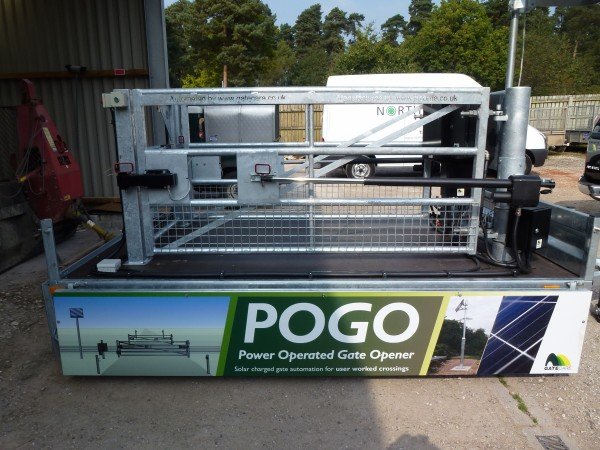
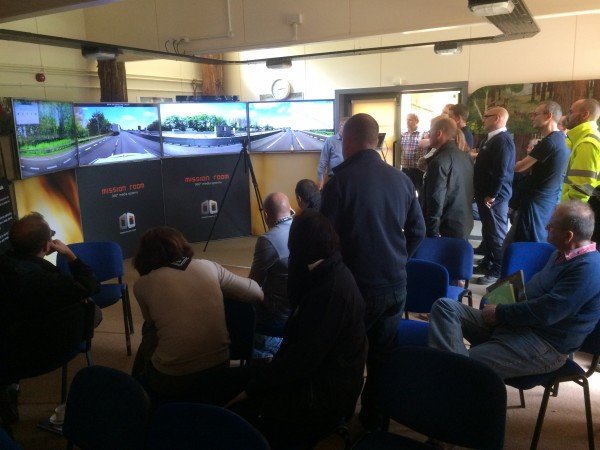
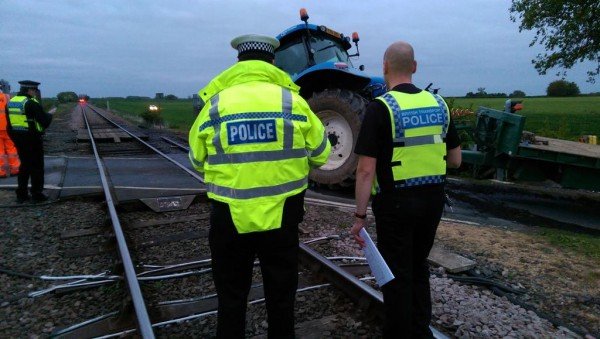

Well explained article with appropriate operational information, new technology and photos to highlight hazards and solutions. And a good sustained campaign too!